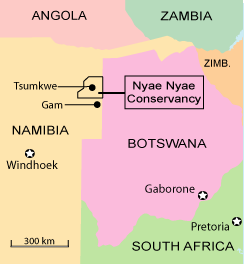Despite reports that Chhotan, a Birhor laborer, was receiving excellent care at a medical center in Ranchi, the capital of India’s Jharkhand state, the man died of his illness. The continuing deaths in the Birhor villages are prompting officials of non-governmental organizations into making renewed commitments to assist the tribal people.
Ashutosh Mairh, a member of the NGO Samvendna, told the Telegraph of Calcutta that the Birhor are prone to diseases due to their ignorance about sanitation and hygiene. They also need to learn about the importance of clean water. He promised that his group would supply the Birhor with chemicals that would sanitize their water sources. He said they would also help construct toilets in one of their villages.
The Asian Human Rights Commission released a report last week about the deplorable living conditions of the so-called Primitive Tribal Groups (PTGs) in India, which include the Birhor. The document reviews the history of past discriminatory laws—acts that classified some societies as “criminal tribes”—and it describes more recent acts that have tried to improve their conditions.
Despite the existence of classification schemes that seek to make sure the tribal people receive government benefits, discrimination persists. The report blames the Hindu caste system as one of the primary culprits. “Often, the benefit of the welfare programmes, particularly concerning the right to food, is denied to [a] tribal community exclusively based on the principle of social exclusion based on caste,” the report asserts.
It cites an unnamed Birhor school where the teaching staff do not allow the children to eat there because they fear that the youngsters would pollute the eating utensils. The report also blames the poverty of the PTGs on government agencies that appropriate tribal lands, forcing the residents into deplorable conditions in the cities. Food cards that are supposed to be available for poor people are, in fact, denied to them in some rural areas.
The report indicates that India has ratified an International Covenant on Economic, Social and Cultural Rights, which guarantees access to food as a fundamental principal of society. Some of the Indian state governments are notoriously lax in supporting this right.
“Unless the Government of India rebuilds its consciousness and adopt[s] and implement[s] more affirmative public policies for the tribes, the government cannot prevent deaths from malnutrition or ensure food security in the country,” the document concludes.
 A
A 